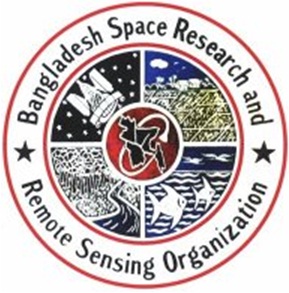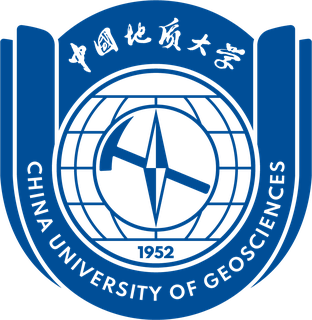
A geographic information system (GIS) consists of integrated computer hardware and software that store, manage, analyze, edit, output, and visualize geographic data. Much of this often happens within a spatial database, however, this is not essential to meet the definition of a GIS. In a broader sense, one may consider such a system also to include human users and support staff, procedures and workflows, the body of knowledge of relevant concepts and methods, and institutional organizations.

Remote sensing is the acquisition of information about an object or phenomenon without making physical contact with the object, in contrast to in situ or on-site observation. The term is applied especially to acquiring information about Earth and other planets. Remote sensing is used in numerous fields, including geophysics, geography, land surveying and most Earth science disciplines ; it also has military, intelligence, commercial, economic, planning, and humanitarian applications, among others.

Geomatics is defined in the ISO/TC 211 series of standards as the "discipline concerned with the collection, distribution, storage, analysis, processing, presentation of geographic data or geographic information". Under another definition, it consists of products, services and tools involved in the collection, integration and management of geographic (geospatial) data. It is also known as geomatic(s) engineering. Surveying engineering was the widely used name for geomatic(s) engineering in the past.
Geoinformatics is the science and technology that develop and use data, software, and computing facilities in the cyberinfrastructure ecosystem to address the needs of geosciences and related branches of science and engineering.
Geographic information science or geoinformation science is a scientific discipline at the crossroads of computational science, social science, and natural science that studies geographic information, including how it represents phenomena in the real world, how it represents the way humans understand the world, and how it can be captured, organized, and analyzed. It is a sub-field of geography, specifically part of technical geography. It has applications to both physical geography and human geography, although its techniques can be applied to many other fields of study as well as many different industries.

The J. J. Pickle Research Campus (PRC) in Austin, Texas, United States is owned and operated by the University of Texas at Austin. It sits on 475 acres (1.9 km²) in northwest Austin, approximately 9 miles (14 km) north of the main UT campus and just south of the Domain.

The Cold Regions Research and Engineering Laboratory (CRREL) is a United States Army Corps of Engineers, Engineer Research and Development Center research facility headquartered in Hanover, New Hampshire, that provides scientific and engineering support to the U.S. government and its military with a core emphasis on cold environments. CRREL also provides technical support to non-government customers.
The Texas Advanced Computing Center (TACC) at the University of Texas at Austin, United States, is an advanced computing research center that is based on comprehensive advanced computing resources and supports services to researchers in Texas and across the U.S. The mission of TACC is to enable discoveries that advance science and society through the application of advanced computing technologies. Specializing in high performance computing, scientific visualization, data analysis & storage systems, software, research & development and portal interfaces, TACC deploys and operates advanced computational infrastructure to enable the research activities of faculty, staff, and students of UT Austin. TACC also provides consulting, technical documentation, and training to support researchers who use these resources. TACC staff members conduct research and development in applications and algorithms, computing systems design/architecture, and programming tools and environments.
The Jackson School of Geosciences at The University of Texas at Austin unites the Department of Geological Sciences with two research units, the Institute for Geophysics and the Bureau of Economic Geology.

The Bangladesh Space Research and Remote Sensing Organization, or SPARRSO, is a state agency concerned with astronomical research and the application of space technology in Bangladesh. SPARRSO works closely with JAXA, NASA and the ESA in environmental and meteorological research. Using Japanese and American satellites, SPARRSO monitors agro-climatic conditions and water resources in Bangladesh.

Geography is a field of science devoted to the study of the lands, features, inhabitants, and phenomena of Earth. Geography is an all-encompassing discipline that seeks an understanding of Earth and its human and natural complexities—not merely where objects are, but also how they have changed and come to be. While geography is specific to Earth, many concepts can be applied more broadly to other celestial bodies in the field of planetary science. Geography has been called "a bridge between natural science and social science disciplines."
The Solar System Exploration Research Virtual Institute (SSERVI), originally the NASA Lunar Science Institute, is an organization, established by NASA in 2008, that supplemented and extended existing NASA lunar science programs. Supported by the NASA Science Mission Directorate (SMD) and the Exploration Systems Mission Directorate (ESMD), SSERVI is a NASA program office located at the NASA Ames Research Center and was modeled on the NASA Astrobiology Institute (NAI) with dispersed teams across the nation working together to help lead the agency's research activities related to NASA's human exploration goals. Competitively selected team investigations focused on one or more aspects of lunar science investigations of the Moon, from the Moon, and on the Moon.

The following outline is provided as an overview of and topical guide to geography:

Barry N. Haack is an American geographer and Emeritus Professor in the Department of Geography and Geoinformation Science at George Mason University in Fairfax, Virginia. He is an international authority on remote sensing, geographic information systems (GIS), and technology transfer from developed to developing nations. Haack is a visiting physical scientist at the United States Geological Survey and an elected Fellow in the American Society for Photogrammetry and Remote Sensing (ASPRS). Through education and collaboration, Haack has influenced the careers of scientists and decision makers from many United States federal agencies and in universities and agencies in nearly thirty countries. He has held formal arrangements with the United Nations, World Bank, Inter-American Development Bank, NASA, the European Space Agency, the National Geographic Society, and many other international organizations and country governmental agencies.
The College of Natural Resources and Environment at Virginia Tech contains academic programs in forestry, fisheries, wildlife sciences, geography, and wood science. The college contains four departments as well as a graduate program in the National Capital Region and a leadership institute for undergraduates.

The Chengdu University of Information Technology, formerly the Chengdu Meteorological College (成都气象学院), is a provincial public university in Chengdu, Sichuan, China. The university is co-sponsored by the China Meteorological Administration and the Sichuan Provincial People's Government.
Rong Fu is a Chinese-American climatologist, meteorologist, researcher, professor, and published author with more than 100 articles, books, and projects detailing changes that occur in Earth's atmosphere and how they affect climate, seasons, rainfall, and the like. Fu has been invited to present over 115 presentations and seminars, and has administered more than 32 projects that received over 11 million dollars in funding. The focus areas of Fu's research are convection; cloud and precipitation processes and their role in climate; atmospheric transport in the upper troposphere and lower stratosphere; the interaction between the atmosphere and ocean and terrestrial vegetation; satellite remote sensing applications and retrievals; the interaction between rainfall rates and the rainforest in regions of the Amazon rainforest; and drought prediction in states across the United States, including California and Texas. She is currently a professor in the Atmospheric and Oceanic Sciences Department at UCLA and the associate director of UCLA's Joint Institute for Regional Earth System Science and Engineering. She is also an adjunct professor in the Jackson School of Geosciences at the University of Texas at Austin.

The China University of Geosciences (Beijing) (Chinese: 中国地质大学(北京); abbreviated CUGB or 北京地大) is a public research university located in Haidian District in Beijing. It is a key national university of China and a Double First Class university listed by the Chinese Ministry of Education. The university is under the direct administration of the Ministry of Education and also holds a partnership with the Ministry of Natural Resources of China.

Karen Ching-Yee Seto is a geographer, urbanisation and land change scientist, and Frederick C. Hixon Professor of Geography and Urbanisation Science at Yale University. She is an expert on urbanisation and sustainability, and satellite remote sensing. She was the co-lead for the chapter on urban mitigation in Intergovernmental Panel on Climate Change (IPCC) 6th Assessment Report and IPCC 5th Assessment Report. From 2014 to 2020, she was the co-editor-in-chief of the scientific journal Global Environmental Change. She is an elected member of the U.S. National Academy of Sciences (NAS), the Connecticut Academy of Science and Engineering (CASE), the American Academy of Arts and Sciences, the Council on Foreign Relations, and a fellow of the American Association for the Advancement of Science (AAAS).
Technical geography is the branch of geography that involves using, studying, and creating tools to obtain, analyze, interpret, understand, and communicate spatial information. The other branches, most commonly limited to human geography and physical geography, can usually apply the concepts and techniques of technical geography. However, the methods and theory are distinct, and a technical geographer may be more concerned with the technological and theoretical concepts than the nature of the data. Thus, the spatial data types a technical geographer employs may vary widely, including human and physical geography topics, with the common thread being the techniques and philosophies employed. To accomplish this, technical geographers often create their own software or scripts, which can then be applied more broadly by others. While technical geography mostly works with quantitative data, the techniques and technology can be applied to qualitative geography, differentiating it from quantitative geography. Within the branch of technical geography are the major and overlapping subbranches of geographic information science, geomatics, and geoinformatics.












